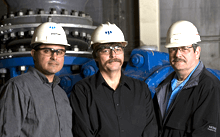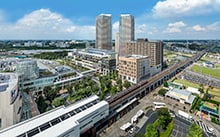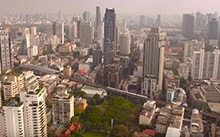SunZia Wind and Transmission is one of the largest renewable energy infrastructure projects in the United States. When the transmission system goes live later this year, it will be capable of transmitting up to three gigawatts (3 GWs) of wind power — enough to supply nearly three million consumers.
Spearheaded by Pattern Energy and supported by Hitachi Energy, Quanta Services, POWER Engineers, and a host of other collaborators, this new transmission line and the associated SunZia Wind farms in rural New Mexico have the potential to serve as a landmark in the U.S. transition to clean energy and a benchmark for future infrastructure endeavors. Beyond its immediate contribution to reliable energy supply, the SunZia project will also demonstrate how large-scale renewable projects can effectively meet surging power demands while supporting decarbonization goals.
The SunZia project will address a critical need by transmitting renewable energy from wind-rich areas in rural New Mexico to densely populated regions where energy demand is surging. Expansive wind farms in New Mexico will harness the region’s abundant wind resources, while the SunZia high-voltage direct current (HVDC) transmission system will efficiently transmit the power over a 550-mile line from New Mexico to the grid in Arizona.
At the heart of the operation is Hitachi Energy’s Voltage Sourced Converter (VSC) technology – HVDC Light®. HVDC Light enhances grid stability and power quality and is designed to transmit power over long distances at minimal cost, which is essential for the efficient integration of remote renewable energy resources. The modular and standardized design of HVDC Light allows for scalability, making it a flexible solution that can adapt to changing grid demands, a big benefit over earlier generations of electric transmission technology. In addition, HVDC lines require less space and can transmit significantly more power than an AC line in a constrained right-of-way corridor. Also, with no technical limit to distance, HVDC lines are ideal for long-distance transmission.
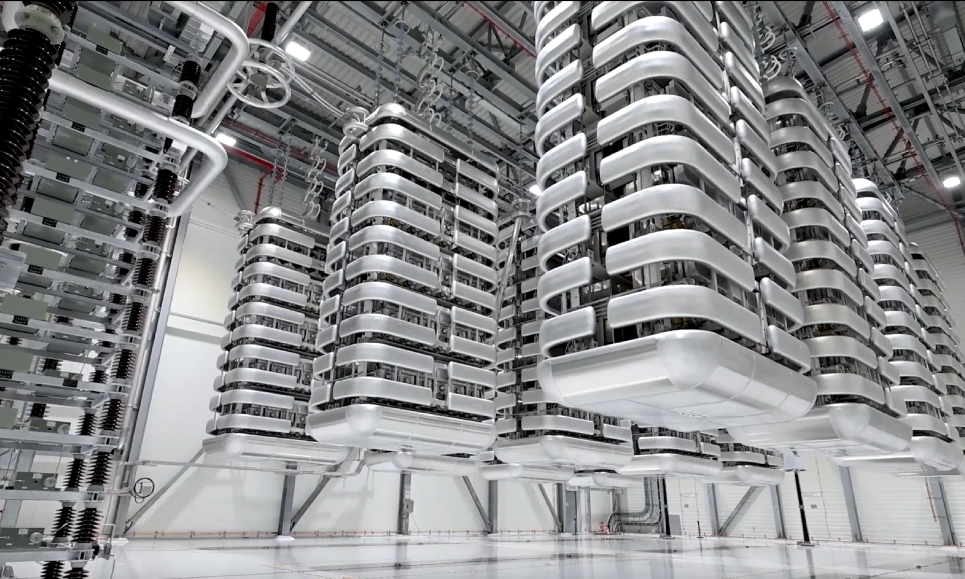
The SunZia transmission system also incorporates AC choppers, which are used to dissipate surplus energy from the islanded wind farms in New Mexico during clearing of temporary DC line faults or disturbances in the electric power grid in the southwestern U.S. When a temporary fault occurs, the choppers are activated and dissipate the excess energy, preventing abrupt changes in the output power from the wind turbine generators and facilitating prompt recovery of the power transmission when the fault is cleared. This will help maintain the stability and reliability of the power transmission system, ensuring that the operation of the SunZia wind farms and the HVDC Light stations remain unaffected by temporary weather-related faults and that American homes and businesses don’t experience interruption. Notably, this is the first onshore wind project in the U.S. to incorporate the AC chopper technology, setting a new benchmark for resilience and reliability.
Hitachi Energy’s MACH control system — the “digital brain” of the HVDC Light system — coordinates the control of the HVDC system and AC choppers with the operation of the wind farms. The MACH system integrates advanced fault registration, remote controls, and seamless component synchronization. This, in turn, allows operators to quickly respond to disturbances and improve system reliability.
The HVDC Light stations and AC choppers ensure that the wind infrastructure operates reliably and efficiently, supporting the seamless integration of renewable energy into the power grid in the southwestern U.S.
Even before the first shovel broke ground, the teams behind SunZia anticipated the need to overcome logistical, regulatory, and environmental hurdles. State-specific regulations in New Mexico and Arizona necessitated adaption of design to local site conditions, while the procurement of custom, high-tech equipment from a limited pool of suppliers required meticulous scheduling to avoid supply chain disruptions.
SunZia’s infrastructure is immense, featuring HVDC converter stations and AC substations. Each HVDC station incorporates two large building complexes with converter valve halls and ancillary equipment. Also, each HVDC station incorporates seven large converter transformer units, and each such transformer unit weighs close to a million pounds. Transporting and installing components of this scale requires exceptional logistical coordination.
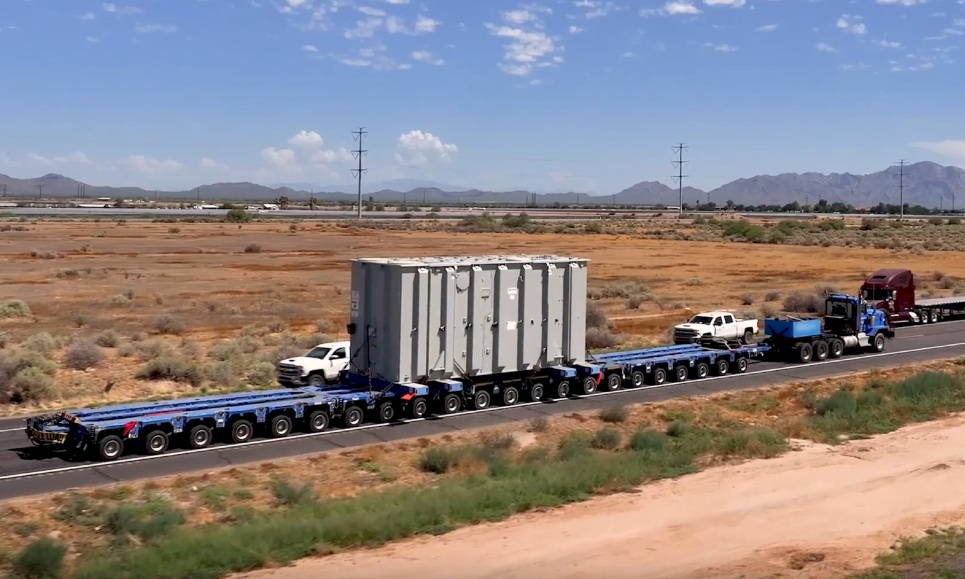
The shared vision among SunZia’s partners has proven invaluable in overcoming obstacles. Managing the complex orchestration of engineering, construction, and environmental compliance across multiple states has demanded strong partnerships built on extensive communication and trust.
“The teamwork between Pattern Energy, Hitachi Energy, and Quanta Services coming together to deliver a successful project has been incredible,” says Tom Saager, Quanta Services Project Manager for SunZia West Converter Station in Arizona. “Collaborating in each area of expertise — from wind farm generation to engineering, innovative designs, and the construction component — has been key to delivering a successful renewable energy project.”
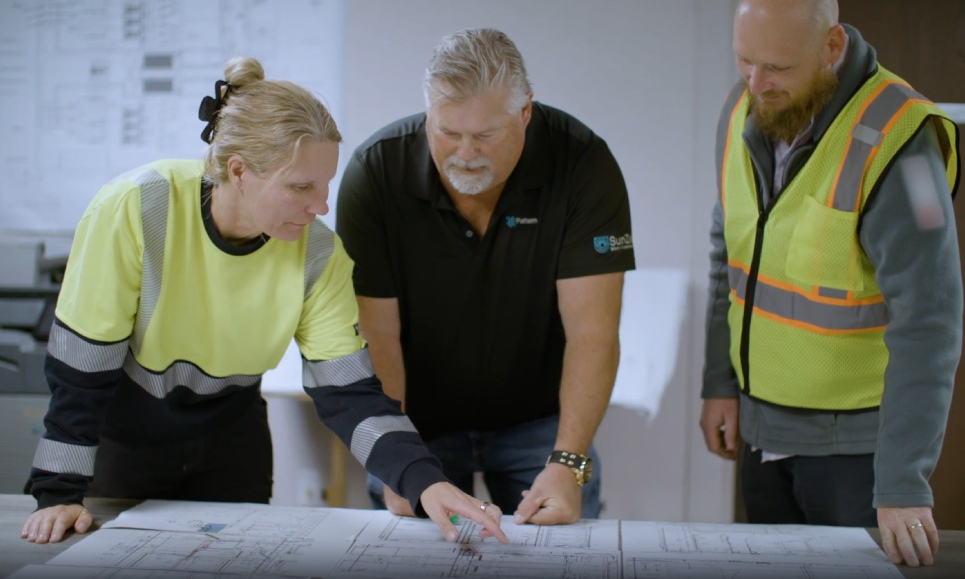
By uniting diverse expertise in engineering, procurement, and construction, SunZia exemplifies how innovation can be balanced with operational efficiency and safety. Daily ‘Plan of the Day’ meetings foster open communication among contractors, engineers, and project managers, while weekly all-hands meetings reinforce commitments to safety, progress, and quality. Safety protocols are especially crucial in the Southwest’s extreme climate, where summer temperatures exceed 115°F. Hydration protocols, shaded rest areas, and adjusted work schedules have helped ensure worker safety, while a capacity model has prepared teams to manage setbacks without compromising well-being.
“Securing skilled labor and adhering to timelines was no small feat,” noted Richard Langford, Site Manager at Hitachi Energy, who underscored the coordinated efforts needed to keep the project on track despite the extreme conditions. “You need partners who share your vision and can bring expertise to the table.”
As the project advances steadily, with the design phase completed and full-scale construction underway, over 500 foundations have been poured, more than 50,000 feet of conduit laid, and major components — including transformers and breakers — installed.
Ultimately, the SunZia Wind and Transmission project exemplifies how visionary renewable energy initiatives can drive economic development, cultivate a skilled and inclusive workforce, and set new benchmarks for technological ingenuity. The project has generated thousands of jobs across industries such as construction, logistics, and engineering and infused billions into the economy, providing essential support to communities facing economic challenges.
SunZia also exemplifies a strong commitment to workforce diversity and inclusivity, with women holding key leadership roles in engineering, management, and site operations — challenging long-standing norms in the traditionally male-dominated energy sector.
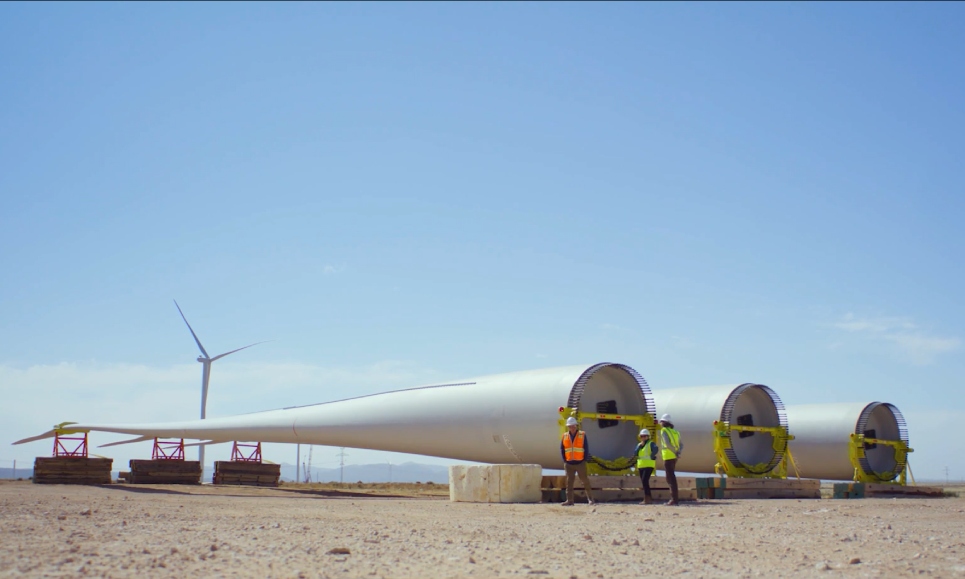
Beyond its primary goal of supplying clean, affordable energy to millions, SunZia is setting a powerful precedent for future large-scale renewable infrastructure projects. By demonstrating the feasibility of long-distance wind energy transmission, the project highlights the nation’s ability to meet rising energy demands sustainably. As Langford remarked, “We’re making what was once thought impossible, a reality.”
